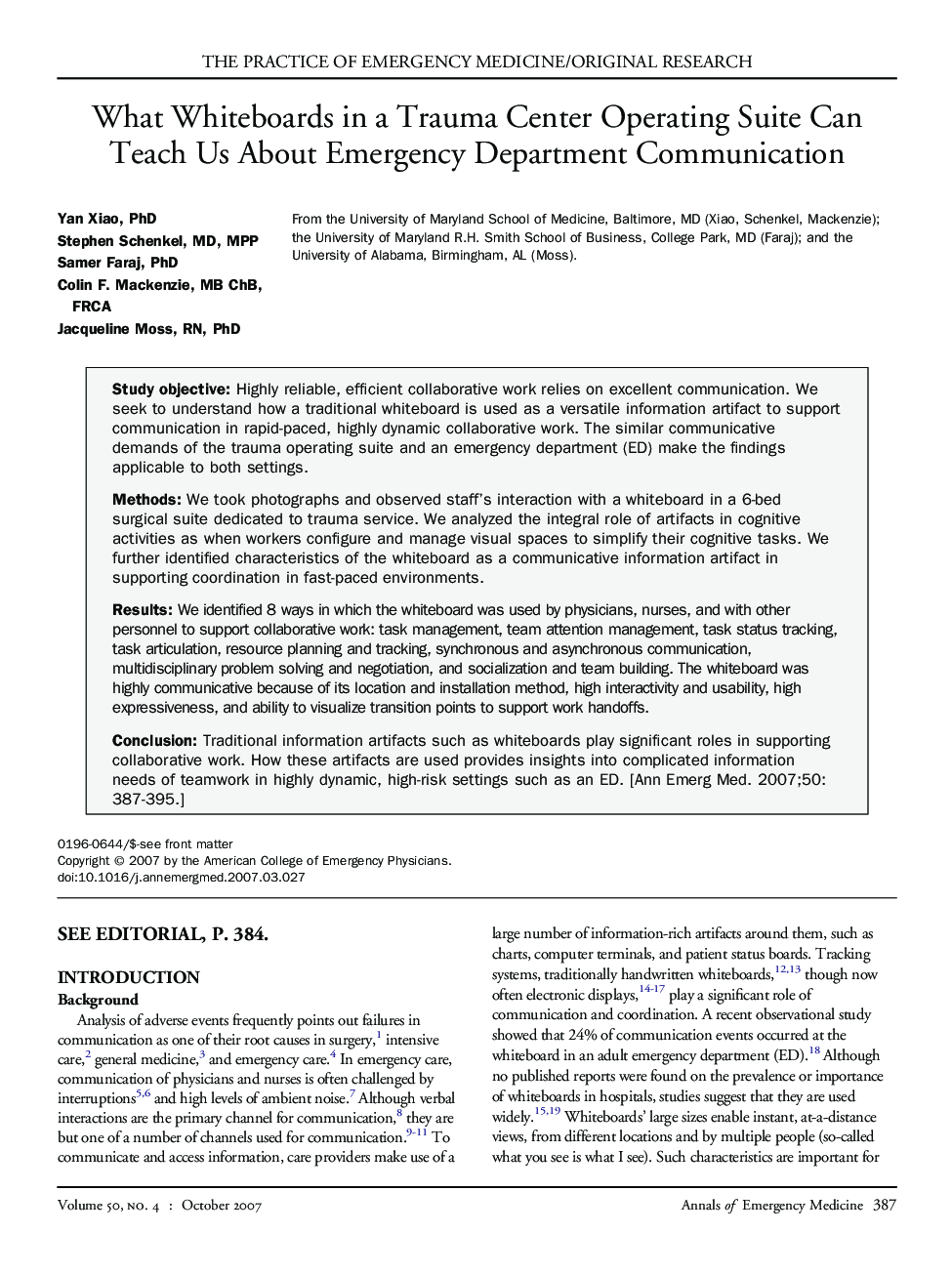| Article ID | Journal | Published Year | Pages | File Type |
|---|---|---|---|---|
| 3233712 | Annals of Emergency Medicine | 2007 | 9 Pages |
Study objectiveHighly reliable, efficient collaborative work relies on excellent communication. We seek to understand how a traditional whiteboard is used as a versatile information artifact to support communication in rapid-paced, highly dynamic collaborative work. The similar communicative demands of the trauma operating suite and an emergency department (ED) make the findings applicable to both settings.MethodsWe took photographs and observed staff’s interaction with a whiteboard in a 6-bed surgical suite dedicated to trauma service. We analyzed the integral role of artifacts in cognitive activities as when workers configure and manage visual spaces to simplify their cognitive tasks. We further identified characteristics of the whiteboard as a communicative information artifact in supporting coordination in fast-paced environments.ResultsWe identified 8 ways in which the whiteboard was used by physicians, nurses, and with other personnel to support collaborative work: task management, team attention management, task status tracking, task articulation, resource planning and tracking, synchronous and asynchronous communication, multidisciplinary problem solving and negotiation, and socialization and team building. The whiteboard was highly communicative because of its location and installation method, high interactivity and usability, high expressiveness, and ability to visualize transition points to support work handoffs.ConclusionTraditional information artifacts such as whiteboards play significant roles in supporting collaborative work. How these artifacts are used provides insights into complicated information needs of teamwork in highly dynamic, high-risk settings such as an ED.
